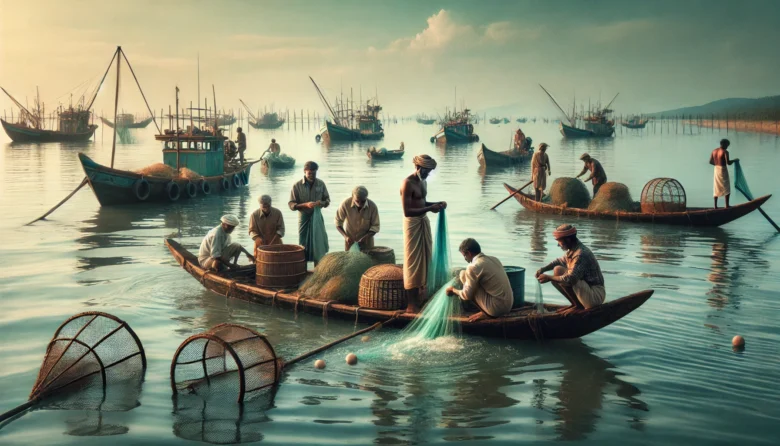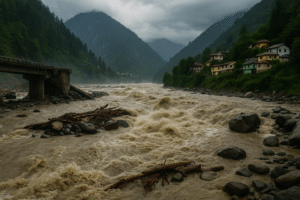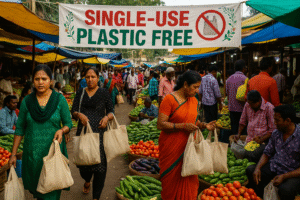In a country like India, where fishing is a crucial livelihood for millions, the concept of sustainable fisheries is vital. Sustainable fisheries aim to balance economic needs with ecological preservation, ensuring that our marine resources remain viable for future generations. In this blog, we’ll explore what sustainable fisheries are, why they matter, and how India can achieve this balance.
What Are Sustainable Fisheries?
Sustainable fisheries maintain fish populations at healthy levels while ensuring that the ecosystems supporting these populations remain functional. This involves managing fishing practices to prevent overfishing, protecting marine habitats, and supporting the livelihoods of fishing communities.
The Importance of Sustainable Fisheries in India
India boasts an extensive coastline stretching over 7,500 kilometers and a long-standing fishing heritage. Unfortunately, unsustainable fishing methods have caused fish populations to dwindle, endangering both the environment and the economy. Sustainable fisheries are important because they ensure long-term ecological health and economic stability.
Economic Significance
Fishing is a significant contributor to India’s economy, providing millions with employment and supplying a substantial portion of the country’s protein intake. Sustainable fisheries help maintain these economic benefits by ensuring that fish stocks are not depleted, allowing future generations to continue fishing.
Ecological Balance
Thriving fish populations are crucial for preserving the equilibrium of marine ecosystems. Overfishing disrupts this balance, leading to the decline of other marine species and the degradation of habitats like coral reefs and mangroves. Sustainable fisheries help preserve these ecosystems, which are crucial for biodiversity and climate regulation.

Challenges to Achieving Sustainable Fisheries
Overfishing
One of the main challenges is overfishing, which is driven by high demand and inadequate regulation. Excessive fishing reduces fish stocks more quickly than they can recover, resulting in a collapse of fish populations.
Bycatch
Bycatch refers to the unintentional capture of non-target species during fishing. This includes marine mammals, turtles, and seabirds, often discarded dead or dying. Bycatch threatens these species and disrupts the marine food web.
Destructive Fishing Practices
Practices like bottom trawling and dynamite fishing cause significant damage to marine habitats. Bottom trawling, for instance, destroys seabed habitats, while dynamite fishing can obliterate entire coral reef systems.
Steps Towards Sustainable Fisheries
Implementing Quotas and Regulations
Setting and enforcing catch quotas based on scientific assessments is essential for sustainable fisheries. These quotas ensure that fish are harvested sustainably, allowing populations to recover and thrive.
Promoting Selective Fishing Gear
It is crucial to use selective fishing gear that minimizes bycatch and habitat damage. For example, circle hooks can reduce turtle bycatch, and modified nets can allow non-target species to escape.
Supporting Fishing Communities
Ensuring fishing communities are involved in decision-making processes and have access to alternative livelihoods can help achieve sustainable fisheries. Providing training and resources for sustainable fishing practices is also vital.
Marine Protected Areas (MPAs)
Establishing MPAs where fishing is restricted or prohibited can help restore fish populations and protect marine habitats. MPAs act as breeding grounds, allowing fish stocks to replenish and spill into adjacent areas.
Success Stories and Innovations
The Kerala Model
Kerala, a state in India, has implemented several successful measures to promote sustainable fisheries. These include seasonal fishing bans, the promotion of selective fishing gear, and the establishment of MPAs. These efforts have led to the recovery of fish stocks and improved livelihoods for local fishermen.
Innovations in Aquaculture
Aquaculture, or fish farming, is another way to reduce pressure on wild fish populations. Sustainable aquaculture practices, such as integrated multi-trophic aquaculture (IMTA), where different species are farmed together to mimic natural ecosystems, can provide a steady supply of fish without harming the environment.
How You Can Support Sustainable Fisheries
As consumers, we can play a role in promoting sustainable fisheries:
- Choose Sustainable Seafood: Look for labels like the Marine Stewardship Council (MSC) certification, which indicates that the seafood comes from sustainable sources.
- Support Local Fishermen: Buying from local, small-scale fishermen who use sustainable practices can help support the economy and the environment.
- Stay Informed: Educate yourself and others about the importance of sustainable fisheries and the impact of your seafood choices.
Conclusion
Sustainable fisheries are essential for balancing our economy’s needs and the health of our marine ecosystems. By implementing sustainable practices, supporting local fishing communities, and making informed decisions, we can keep our oceans healthy and productive for future generations.
Author’s Note:
Thank you for reading! Sustainable fisheries are about preserving our environment, securing livelihoods, and ensuring food security. Let’s work together to make a positive impact on our oceans and coastal communities.
G.C., Ecosociosphere contributor.




